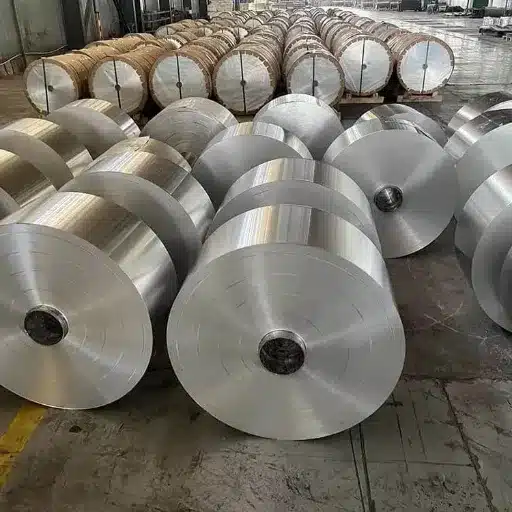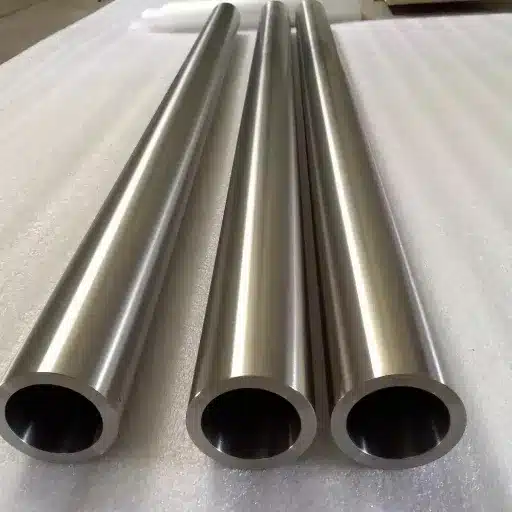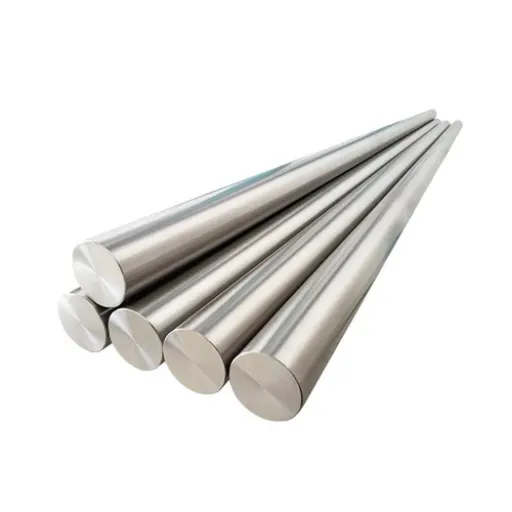Maraging 350 steel, which is certified under AMS 6515, is a high-performance material that is used in the most rigorous applications of the aerospace, defense, and industrial markets. It is very strong, tough, and easy to machine, which are some of its most important properties. This alloy was produced by vacuum melting and annealing and is the most expensive in highly engineered materials. But what actually is it that gives Maraging 350 steel its uniqueness and what are the ways of employing it in forging that will meet the most critical standards? The present blog is going to highlight the key features, advantages, and, of course, the techniques of Maraging 350 steel, thus, giving the industry professionals a golden opportunity to benefit from its excellence in performance. So, whether you are a materials engineer or just interested in learning more about metallurgical developments, this article is going to consider the reasons behind this alloy being a game-changer for high-stakes applications.
Introduction to Maraging Steel
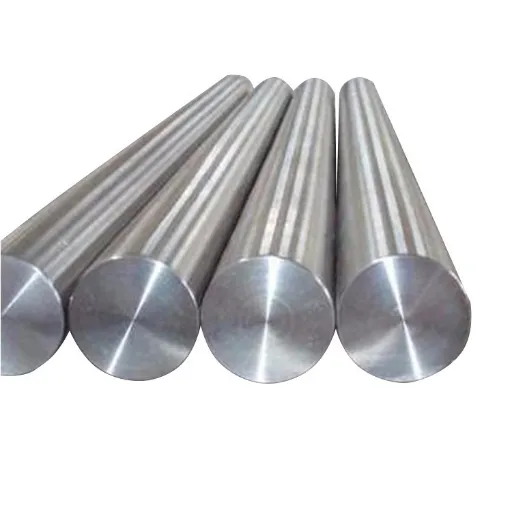
Maraging 350 steel is preferred for forging processes because of its remarkable strength, toughness, and dimensional stability. These attributes make it a suitable material for high-performance applications, such as aerospace components, tooling, and high-pressure systems, where precision and reliability are critical. The steel’s remarkable properties enable it to endure extreme stresses without losing its structural integrity, making it the perfect choice for demanding situations.
What is Maraging Steel?
Maraging steel is a high-strength alloy with such remarkable toughness, malleability, and wear resistance that it can hardly be surpassed in those properties. The nomenclature “maraging” is a result of intertwining the words “martensitic” and “age-hardening,” which are the critical stages of its manufacturing process. Unlike conventional steels wherein the strength is mostly determined by the amount of carbon in the steel, the maraging steels are achieved by controlled additions of low carbon levels and large amounts of nickel, cobalt, molybdenum, and titanium. Enabling the alloy to undergo a new heat treatment method called age hardening, these metals contribute to the creation of a material possessing superior mechanical properties.
One of the prominently mentioned features of maraging steel is its astonishing yield strength that depending on the specific grade can vary between 1400 MPa to 2400 MPa (200,000 to 348,000 psi). Its hardness along with its strength has made it the most preferred material among the aerospace, automotive, and tooling industries to mention just three, where reliability in extremely stressful conditions is of utmost importance. For instance, Maraging 350, one of the maraging grades, finds its application in missiles casings, die casting tools, and high-performance gears to name a few.
History and Development of Maraging Steel
Maraging steel was developed early in the 20th century, but it was still in the 1950s that researchers working on materials for aerospace and defense applications made significant breakthroughs. The word “maraging” signifies a combination of “martensite” and “aging,” which point to the formation of the material. Maraging steel was developed in Germany initially, where it was recognized for its combination of ultra-high strength and exceptional toughness that was achieved through innovative metallurgical techniques.
Maraging steel was used extensively in the 1960s as an aerospace material not only for engineers but also for the technology involved in the manufacture of rocket motor casings, jet engines, and landing gear. By applying low-carbon martensitic steel and adding nickel, cobalt, molybdenum, and titanium, scientists succeeded in producing a material that not only had negligible heat treatment distortion but also good cutting characteristics.
Maraging 350 Steel Specifications
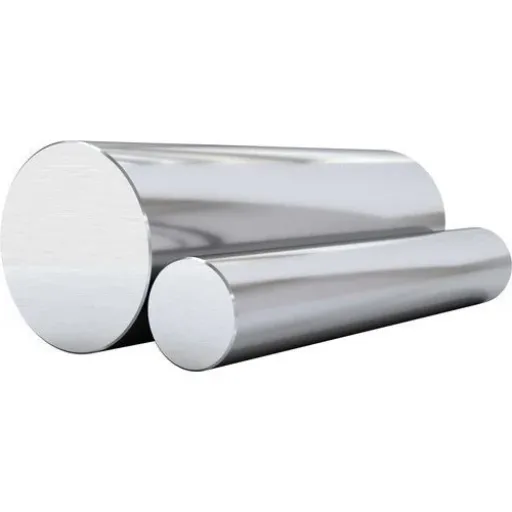
Maraging 350 steel is a strong and low-carbon martensitic steel alloy that consists of nickel, cobalt, molybdenum, and titanium. Its characteristics include a great machinability, minimal heat treatment distortion, and it is being used in the aerospace industry for manufacture of rocket motor casings and landing gear.
Mechanical Properties of Maraging 350 Steel
Maraging 350 steel displays outstanding mechanical properties which are very useful in high-performance areas. With proper thermal treatment, this alloy shows great strength, toughness, and ductility. Some of its important mechanical properties listed below:
| Property | Value | Description |
|---|---|---|
| Ultimate Tensile Strength (UTS) | ~2,450 MPa (355 ksi) | This strengthens the tensile strength of the alloy and is mainly due to aging process, which forms the intermetallic compounds within the martensitic structure. |
| Yield Strength (YS) | >1,655 MPa (240 ksi) | Provides very good resistance to the deformation caused due to the high stresses. |
| Elongation at Break | 6-10% | Having the characteristic of being a strong and ductile material at the same time. |
| Hardness | 53-58 HRC | The values post-aging guarantee the wear resistance of the tooling and structural applications. |
| Impact Toughness | High at Low Temperatures | The alloy is able to maintain its toughness even at very low temperatures, crucial for aerospace and military fields. |
| Fatigue Resistance | High | High resistance to the cyclic loading makes it fit for the parts working in high-stress fatigue applications. |
Applications of Maraging 350 Steel
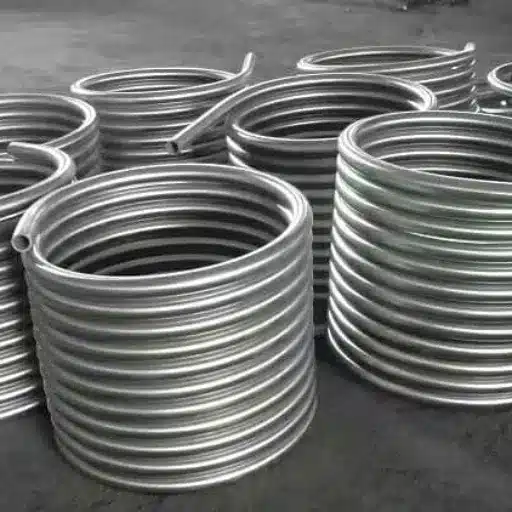
Maraging 350 steel is the choice of material as well as a widely used one in the applications that need a combination of toughness, resistance to fatigue, and high strength. I would suggest personally that it be used in aerospace, and military applications, amongst others, such as the parts of high-performance motorsport and missile systems. The steel’s properties are great for use in critical areas where reliability is the main factor.
Aerospace Industry
Maraging 350 steel finds extensive use in the aerospace industry majorly due to its extraordinary strength combined with low mass and its exceptional durability against fatigue. The features of this steel allow it to be used for making parts that are of utmost importance, like landing gears, rocket engine casings, and parts for the aerostructure. For example, this material is frequently used in missile casing and airplane wing parts that must not fail even under extreme conditions.
Tooling and Die-Making
The maraging 350 steel’s remarkable toughness and resistance to wear place it among the most preferred materials for the making of high-performance tools and dies. It is the default material for making injection molds, stamping dies, and extrusion tools in most industries that require precision manufacturing. The material’s good machinability combined with its ability to retain hardness even after prolonged use has led to reduced production downtime and increased cost-effectiveness.
Benefits in Aerospace and Defense
Remarkable benefits are brought about by Maraging 350 steel in the aerospace and defense sectors the most important of which is its extremely strong, tough, and reliable character that no other material possesses. The steel has such a high tensile strength (more than 240 ksi) that it can survive very heavy loads and thus the steel can be used for making parts such as landing gear, rocket engine casing, and support of aircraft and spacecraft. Moreover, the steel’s top-notch toughness to fractures under the stress of 80-100 ksi√in, enables it to withstand the high-stress conditions without suffering a catastrophic failure.
The dimensional stability of the material during heat treatment is excellent and this quality is very important in aerospace and defense applications where tight tolerances are absolutely necessary. Stress corrosion cracking is also an eventuality the material is resistant to and this ensures that it will perform well even in harsh environments such as the high-altitude and marine operations. Moreover, recent applications have also put Maraging 350 steel to use in advanced missile systems and hypersonic technologies, where the material’s capability to bear high cyclic loads and resist fatigue is indispensable. The maraging steel when combined with the additive manufacturing facility has the ability to produce complex geometries and lightweight designs which reinforce its place as a contributor in modern aerospace and defense innovations.
Forging Techniques for Maraging 350 Steel
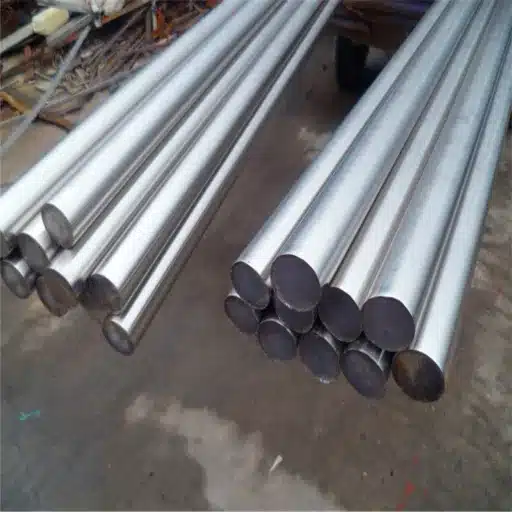
Key Consideration: When working with Maraging 350 steel, my main objective is to get an absolute temperature control and to treat it very carefully during the whole process in order to keep its remarkable properties. One of the main operations performed on the material is heating it to the final forging temperature range, and then the slow cooling and the right aging for the steel are done, which contributes to getting the best possible combination of the mechanical properties of strength, toughness, and ductility.
The Role of Vacuum Annealing in Maraging 350 Steel
Vacuum annealing is of utmost importance to Maraging 350 steel since it boosts its performance in the range of high-stress applications. With this heat treatment process, the metal is subjected to vacuum conditions which mainly aim to prevent oxidation and contamination, thus keeping the material’s surface and internal structure with their original properties. During the vacuum annealing of steel, the metal is usually heated up to the range of 1500°F to 1700°F (815°C to 927°C) and then cooled down in a controlled fashion. Gradual heating of the metal allows the removal of stresses and at the same time the microstructure is refined.
This novel technique creates a metal that has a better microstructure which in turn gives the metal extraordinary strength, toughness, and durability. The DVM method is associated with oxygen and sulfur levels getting down to less than 0.001% which in turn has a positive impact on fatigue resistance and makes the metal more usable in high-pressure environments. The aerospace and defense industries are the ones that benefit the most from the Double Vacuum Melted process since they often need to use materials for critical components in which landing gear, missile parts, and turbine shafts are examples where reliability and performance under stress are very important issues.
Comparison with Similar Alloys
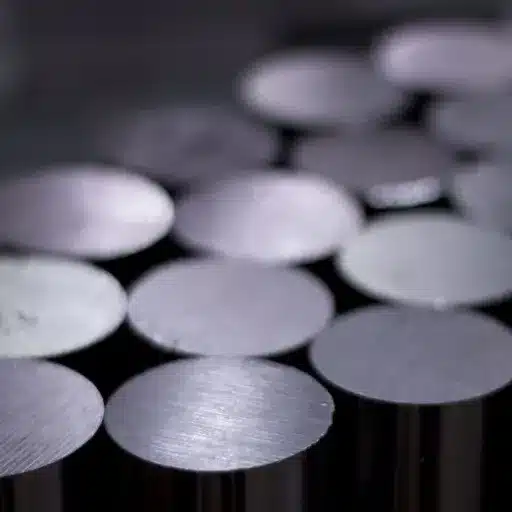
When evaluating alloys that are similar, I try to find the main distinctions through their respective compositions, processing methods, and performance characteristics. For example, the alloys that are subjected to the Double Vacuum Melted process usually have the highest purity levels, the best fatigue resistance, and strength, which makes them suitable for high-stress applications. This is in sharp contrast to the standard alloys that might not be as trustworthy as the former in extreme conditions.
Maraging 350 vs. Other Maraging Alloys
Strength and Hardness
Among the typical maraging alloys, Maraging 350 possesses the highest yield strength, having a nominal value of roughly 2400 MPa (348 ksi) after the ageing process, which is the reason behind its being so fitting in the applications that need the maximum load-bearing capacity, among them are aerospace components and tooling. In comparison:
- Maraging 200: Has a nominal yield strength of 1400 MPa (203 ksi), thus being weaker but still adequate for use in lighter structural applications.
- Maraging 250: Has a yield strength of 1700 MPa (247 ksi), which gives the opportunity to have a proper mix of strength and ease of machining.
- Maraging 300: Provides a yield strength of about 2000 MPa (290 ksi), which makes it attractive for high-performance applications, but not as strong as Maraging 350.
Toughness and Ductility
Maraging 350, while having the best strength of all maraging alloys, ductility is good always, and for that, it is not hard for the alloy to resist crack propagation during high-stress operations. Maraging 200 and Maraging 250 show better ductility that makes them suited for applications where forming and shaping are important.
Corrosion Resistance
Maraging steels, including Maraging 350, are notorious for their poor corrosion resistance in comparison with stainless steels. But, they can be effectively coated or surface-treated to last longer in harsh environments.
Cost-Benefit Analysis of 350 Steel
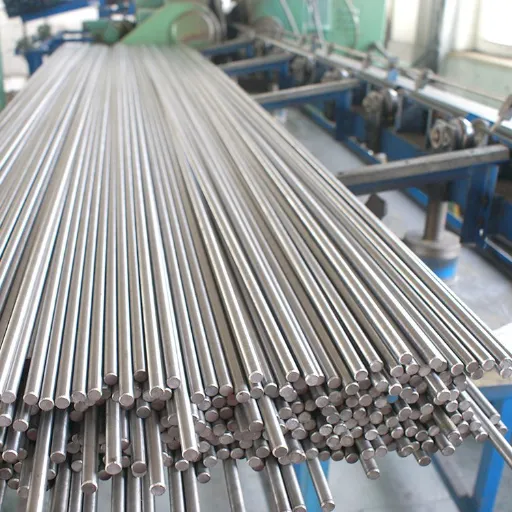
Cost Considerations:
Maraging 350 steel is usually considered to be a less expensive option than Vascomax® 350 due to its greater availability and relatively lower production costs. According to the latest pricing trends in the industry, Maraging 350 steel is priced around $30 to $35 per pound while Vascomax® 350 may price between $35 and $45 per pound depending on the supplier and quantity of order. The higher cost of Vascomax® 350 is due to its being proprietary and having improved properties, which are often customized for high-performance applications.
Performance and Value:
Impressive mechanical properties are present in both materials, such as tensile strength up to 350 ksi (kilo-pound per square inch) and crack resistance under stress. On the other hand, Vascomax® 350 is characterized by its tighter quality controls and consistency making it very attractive for critical industries such as defense and aerospace. For projects where the highest accuracy and dependability are required, the extra expense of Vascomax® 350 can be supported by its unmatched performance.
Reference Sources
-
SAE International
- Title: AMS6515 – Steel, Maraging, Bars, Forgings, Tubing, and Stock
- Description: This standard outlines the specifications for premium aircraft-quality Maraging 350 steel, including its forms, properties, and applications.
- Link: SAE International – AMS6515
-
Smiths Advanced Metals
- Title: Maraging 350 Steel, AMS 6515
- Description: This page provides insights into the properties, applications, and benefits of Maraging 350 steel, particularly for high-performance engineering and aerospace industries.
- Link: Smiths Advanced Metals – Maraging 350 Steel
-
SSA Corporation
- Title: Maraging 350 / VASCOMAX® 350 Steel – AMS 6515
- Description: This resource discusses the mechanical properties, workability, and high tensile strength of Maraging 350 steel, along with its suitability for demanding applications.
- Link: SSA Corporation – Maraging 350 Steel
Frequently Asked Questions (FAQs)
What are the chemical composition and mechanical properties of AMS6515?
The chemical composition of AMS6515 is composed of 18.5% nickel, 12.0% cobalt, 4.9% molybdenum, and 1.40% titanium, among others. These materials confer to it remarkable properties such as high strength, and toughness which are critical in aerospace components and missile and rocket motor applications.
How is AMS6515 steel fabricated?
The processes involved in the fabrication of AMS6515 steel are forging and finish machining. The material comes in the shape of bars or seamless tubes, and it might go through several thermal treatments to acquire the desired mechanical properties and to increase the performance.
What is the significance of the double vacuum melted process for AMS6515?
The double vacuum melted process, especially the 0.10Al double vacuum melted technique, is very important to AMS6515 because it removes impurities and enhances the quality of the material. Such a procedure guarantees delivery of the end product with superb mechanical properties and reliability for usage in difficult situations.
What thermal treatments are recommended for AMS6515 maraging steel?
AMS6515 maraging steel needs certain heat treatments to be effective like solution annealing. These treatments are necessary to give the material the desired strength and toughness while also making the material more machinable for different applications.
What forms is AMS6515 steel available in for use?
AMS6515 steel can be supplied in various forms, such as bars and tubing. The seamless tube form is especially beneficial for applications needing large cross sections combined with high strength, thus being a preferred option in the aerospace and defense industries.
What are the primary strengthening agents in maraging 350 steel?
Nickel and cobalt are the main sources of strength in maraging 350 steel and they work together to improve the material’s hardness and ductility. The peculiar mixing of these elements is a reason for the steel to be classified as a martensitic alloy.

